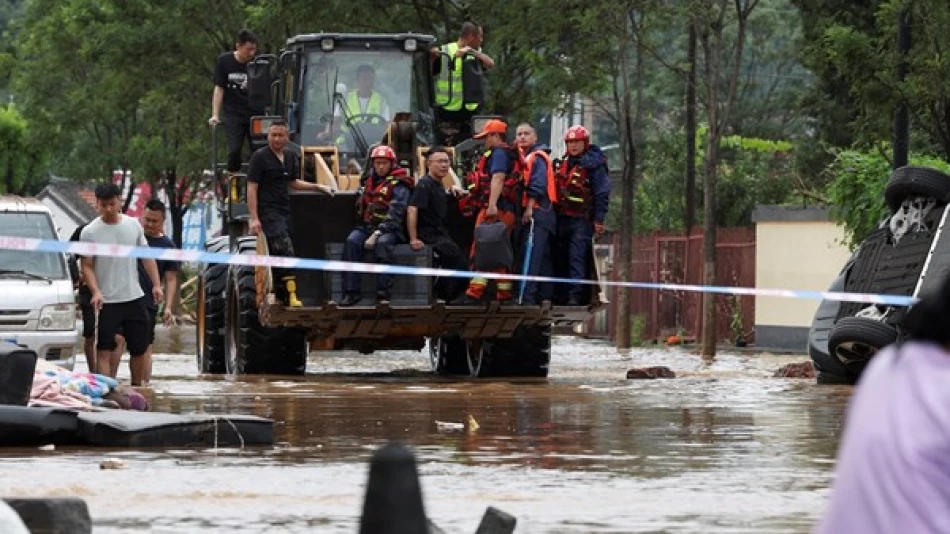
Deadly Downpours and Floods Ravage Beijing, Death Toll Rises
Beijing's Deadly Floods Expose China's Growing Climate Vulnerability
Torrential rains and flooding have killed at least 34 people across Beijing and surrounding areas, marking another devastating blow to China's capital region just one year after similar deadly floods. The disaster highlights the increasing frequency and severity of extreme weather events challenging China's urban infrastructure and emergency preparedness systems.
Death Toll Mounts as Peripheral Districts Bear the Brunt
Beijing authorities confirmed Tuesday that 30 people died within the capital city limits, with the hardest-hit Miyun district accounting for 28 fatalities. Two additional deaths occurred in the Yanqing district. Both areas lie on Beijing's periphery, away from the heavily protected city center where most government institutions and economic activity are concentrated.
The geographic pattern of casualties reflects a broader challenge facing Chinese urban planning: while downtown areas benefit from robust flood defenses and infrastructure investment, outlying districts often lack adequate protection despite housing millions of residents.
Massive Evacuation Efforts Underway
More than 80,000 people have been relocated to safer areas across Beijing, including approximately 17,000 from Miyun district alone. The scale of displacement underscores the severity of flooding and suggests authorities learned from previous disasters about the importance of preemptive evacuations.
In neighboring Hebei province's Luanping county, a landslide killed four people with eight others still missing, according to Monday reports. This brings the regional death toll to at least 34, though numbers may rise as rescue operations continue.
Record-Breaking Rainfall Overwhelms Infrastructure
The storms dumped an average of 16 centimeters of rain across the region by Tuesday midnight, but two towns in Miyun recorded a staggering 54 centimeters. These precipitation levels represent some of the heaviest rainfall the area has experienced in recent years.
Most dramatically, water levels at a Miyun reservoir reached their highest point since the facility's construction in 1959, forcing authorities to release water and warn residents to stay away from rivers. The reservoir's critical status illustrates how extreme weather events are testing infrastructure built during China's earlier development phases.
Government Response Signals Policy Priorities
Chinese Premier Li Qiang described the flooding as causing "serious human casualties" and called for intensified rescue efforts, according to state news agency Xinhua. The high-level government attention reflects Beijing's sensitivity to natural disasters affecting the capital region, where political stability and economic continuity are paramount concerns.
The storms knocked out power to over 130 villages, destroyed communication lines, and damaged more than 30 road sections, creating a cascade of infrastructure failures that complicated rescue operations.
Pattern of Recurring Disasters Raises Long-Term Questions
This disaster follows severe flooding that struck Beijing and Hebei in 2023, establishing a troubling pattern of annual extreme weather events. The recurring nature of these floods suggests that climate change is fundamentally altering the region's weather patterns, potentially overwhelming existing flood control systems designed for historical precipitation levels.
For China's leadership, these repeated disasters present both immediate humanitarian challenges and longer-term questions about infrastructure investment priorities. The concentration of casualties in peripheral districts may prompt renewed attention to flood defenses beyond Beijing's core areas, particularly as urban sprawl continues expanding into previously rural zones.
The economic implications extend beyond immediate reconstruction costs, as repeated flooding disrupts supply chains, damages agricultural production, and forces costly population relocations that strain municipal budgets across northern China.
 Layla Al Mansoori
Layla Al Mansoori







